Steak is one of the most popular foods in the world.
Despite the health debates about red meat, steak is a nutrient-dense food that offers a range of benefits.
However, the nutrition profile of steak can vary by a surprising degree, and this depends on the specific cut.
In this article, we will look at the nutrition facts for 11 popular types of steak.
Additionally, each cut has been given a ‘tenderness’ rating that we have calculated based on muscle profiling research by the Universities of California, Nebraska, and Texas (1, 2).
The source of all nutrition data is the USDA Food Composition Databases, and it is per 100 grams raw.
1) Tri-Tip (Bottom Sirloin)
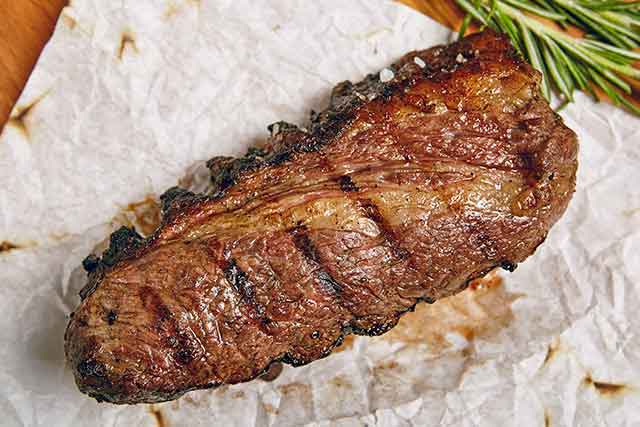
- Type of Steak: Tri-tip
- Average Weight: 261 g
Tri-tip is a large triangular-shaped cut of bottom sirloin.
Long popular in California, this cut of steak has become more popular over recent years, and it has become more common as a result.
Tri-tip’s location is at the bottom end of sirloin, and it is next to the flank and rump.
Nutrition Facts (per 100 g)
| Calories: | 211 kcal |
|---|---|
| Fat: | 11.1 g |
| Protein: | 26 g |
| Tenderness Level: | 6/10 |
As shown in the table, tri-tip is quite low in fat compared to some cuts of steak, and it contains around 11 grams of fat (3).
Despite the low fat content, tri-tip is still reasonably tender.
This cut of steak is also very flavorful and more affordable than steaks such as ribeye and t-bone.
2) Chuck Eye
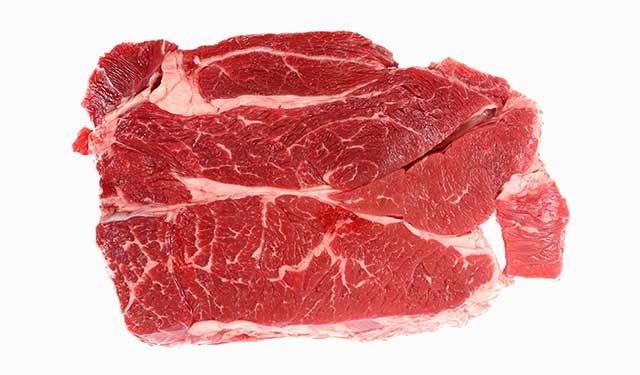
- Type of steak: Chuck Eye
- Average Weight: 308 g
Chuck eye steak attracts the nickname of “a poor man’s ribeye,” and this is somewhat close to the truth.
There is a helpful guide here on how to make chuck eye steaks taste like ribeyes.
What Exactly Is a Chuck Eye?
First of all, chuck eye steak is very different from chuck steak, and these similar names can be confusing.
The chuck area (shoulder muscle) gets frequent exercise, so most meat cuts from this area are tough.
However, chuck eye’s location makes it relatively tender.
To be specific, chuck eye is located right next to ribeye.
There are seven ribeyes, cut from the 6th to 12th rib. The chuck eye is the cut from between the 5th and 6th rib, so it is right next door.
Due to its low cost and an ideal mixture of fat and meat, butchers often use chuck eye to produce ground beef.
Nutrition Facts (per 100 g)
| Calories: | 277 kcal |
|---|---|
| Fat: | 19.6 g |
| Protein: | 25 g |
| Tenderness Level: | 6.5/10 |
As shown above, chuck eye steak is rich in both protein and fat (4).
3) Flank

- Type of Steak: Flank
- Average Weight: 383 g
Flank is a thin and relatively large cut of steak from the abdominal region.
This type of steak contains a large number of muscle fibers, and it is very lean with only 8 grams of fat per 100 grams (5).
Although flank is not among the most tender steaks, it is not one of the toughest either.
It is probably fair to say that flank steak is neither tough nor tender and comes somewhere in the middle.
For more lean cuts of meat, see this guide here
Nutrition Facts (per 100 g)
| Calories: | 192 kcal |
|---|---|
| Fat: | 8.2 g |
| Protein: | 27.7 g |
| Tenderness Level: | 5/10 |
While flank steak may not be the tenderest of steaks, it is one of the most flavorful options.
However, it tastes best done to a medium or medium-rare level, as well done flank can become too chewy.
4) Strip (Sirloin)

- Type of Steak: Strip (Sirloin)
- Average Weight: 214 g
This is one of the most famous types of steak, but the name depends on your location.
While it has the name strip steak in the United States, it just goes by ‘sirloin’ in the UK, Ireland, and Australia.
If you encounter it at a nice restaurant, the menu may also use the French name of ‘contre-fillet.’
The strip steak is a cut that comes from the short loin, and it is located in between the rib and sirloin.
Since the muscle in this area does not work hard, the meat is very tender with sizable fat content.
Nutrition Facts (per 100 g)
| Calories: | 211 kcal |
|---|---|
| Fat: | 10.6 g |
| Protein: | 27.1 g |
| Tenderness Level: | 7/10 |
The calories in strip steak are split almost equally between protein and fat (6).
Lastly, strip steak is easy to prepare, and it tastes excellent whether pan-searing or roasting in the oven.
5) Ribeye

- Type of Steak: Ribeye
- Average Weight: 291 g
For a lot of people, the ribeye is the king of steak.
With a high fat content, this cut of meat is usually well-marbled and extremely tender.
Ribeye has an extremely flavorful beef taste, and it is simple to cook too.
Since the meat is very fatty, even cooked poorly it still produces a delicious, well-flavored steak.
Nutrition Facts (per 100 g)
| Calories: | 291 kcal |
|---|---|
| Fat: | 21.8 g |
| Protein: | 23.7 g |
| Tenderness Level: | 8/10 |
Ribeye steak contains almost as much fat as it does protein, and the fat content is the biggest contributor to the total calorie count (7).
This cut of meat is one of the most tender steaks money can buy, but it is also one of the most expensive.
6) Round (Topside/Silverside)

- Type of Steak: Round (Topside)
- Average Weight: 236 g
Round steak is a cut of meat from the upper back legs of a cow.
In the UK, this cut has the name of “topside.”
This particular steak is very lean and contains little fat.
Also, since it comes from a hard-working muscle, the meat is very dense, and the steak has a tough and chewy texture.
As a result, slow cooking methods such as braising or longer cooking times at a lower heat work best for round steak.
Nutrition Facts (per 100 g)
| Calories: | 192 kcal |
|---|---|
| Fat: | 7.1 g |
| Protein: | 27.5 g |
| Tenderness Level: | 4/10 |
With only 7 grams of fat, round steak is also lower in calories than most other cuts of steak (8).
For the best taste, chop this steak into cube shapes and slow cook it alongside some root vegetables in beef stock.
7) Skirt

- Type of Steak: Skirt
- Average Weight: 460 g
Although it has a higher fat content than flank steak, skirt has a tougher texture (9).
The reason? Skirt contains some tough and dense muscle fibers.
On the positive side, skirt is one of tastiest types of steak, and it has a deep flavor.
If you don’t mind a chewier steak, then few people are disappointed with the taste of this one.
To serve a slightly juicier steak, quickly pan-searing the meat is a good idea, preferably to a medium or medium-rare level.
In contrast, skirt also works well as a braising steak, cooked at a low temperature for a longer period.
Nutrition Facts (per 100 g)
| Calories: | 220 kcal |
|---|---|
| Fat: | 12.1 g |
| Protein: | 26.1 g |
| Tenderness Level: | 3/10 |
Skirt steak is an excellent option for making a tasty stew.
The flavorful meat imparts a lot of flavors, and it becomes more tender with the longer braising time.
8) T-Bone and Porterhouse

- Type of Steak: T-Bone and Porterhouse
- Average Weight: 600 g
T-Bone steak is actually like having two steaks in one; a T-shaped bone separates a strip steak and a tenderloin, both of which are among the most tender cuts of beef.
T-Bone and Porterhouse steaks are two of the most famous cuts of steak in the world.
Despite the two different names, they are virtually the same cut of meat.
In short, the only difference is that Porterhouse is a slightly larger cut that includes a more significant portion of tenderloin.
Nutrition Facts (per 100 g)
| Calories: | 247 kcal |
|---|---|
| Fat: | 15.9 g |
| Protein: | 24.2 g |
| Tenderness Level: | 8/10 |
As shown in the nutrition profile, t-bone has a higher fat content than most other cuts (10).
Overall, T-Bone is unique because of its iconic shape and the fact that it offers the opportunity to sample two different types of steak.
9) Tenderloin (Filet Mignon)

- Type of Steak: Tenderloin
- Average Weight: 225 g
Tenderloin is by far the most tender cut of steak, and people often compare it to butter for how effortlessly a knife slices through it.
Depending on where you live and the exact cut of the meat, this steak may also be referred to as “filet mignon” or “filet steak.”
On the downside, tenderloin’s taste doesn’t quite match up to its tenderness, and it lacks flavor.
The lack of fat and marbling in tenderloin is responsible for this mild taste.
Nutrition Facts (per 100 g)
| Calories: | 218 kcal |
|---|---|
| Fat: | 11.1 g |
| Protein: | 27.6 g |
| Tenderness Level: | 9/10 |
Tenderloin contains around 11 grams of fat per 100 grams, which is surprisingly low considering the steak’s tenderness (11).
10) Tomahawk
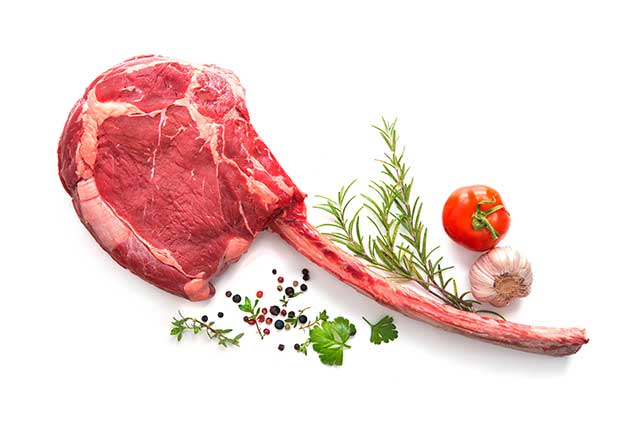
- Type of Steak: Tomahawk
- Typical Weight: 1 kg
The tomahawk steak is sure to please any fans of ribeye.
Regarding the actual meat, tomahawk and ribeye are almost identical, and the difference is mainly in the visual presentation.
Put simply; the tomahawk steak is a ribeye which still has the whole rib bone attached.
However, these cuts are often very thick cuts that dwarf the size of a standard ribeye.
For instance, the tomahawk often comes at sizes well over 1 kg, and it is typically over 5 cm in thickness.
Nutrition Facts (per 100 g)
| Calories: | 291 kcal |
|---|---|
| Fat: | 21.8 g |
| Protein: | 23.7 g |
| Tenderness Level: | 8/10 |
As shown, tomahawks offer the same nutrition profile as ribeye, but with a super-sized steak.
11) Top Sirloin
- Type of Steak: Top Sirloin
- Typical Weight: 306 g
Top sirloin is one of the most famous types of steak, and it is a juicy and tender cut.
Although it is not as soft as options like tenderloin, this steak is much more flavorful, and it has a strong beefy taste.
Top sirloin usually has a moderate amount of marbling, and it suits pan frying.
Nutrition Facts (per 100 g)
| Calories: | 243 kcal |
|---|---|
| Fat: | 14.2 g |
| Protein: | 27 g |
| Tenderness Level: | 7/10 |
With a tender texture, top sirloin is rich in both fat and protein (12).
While top sirloin doesn’t quite match choices like Porterhouse and the ribeye for flavor and tenderness, it is not far away.
Final Thoughts
As shown in this article, classifying so many different cuts of meat by the word “steak” can be misleading.
Depending on the steak, the nutrition profile, taste, and best cooking method all differ.
However, it is difficult to find a cut that tastes bad, and all types of steak offer a variety of important nutrients.
All in all, steak is an excellent food to include as part of a healthy diet.
See this guide on how to cook steak for 10 tips on making the perfect steak.

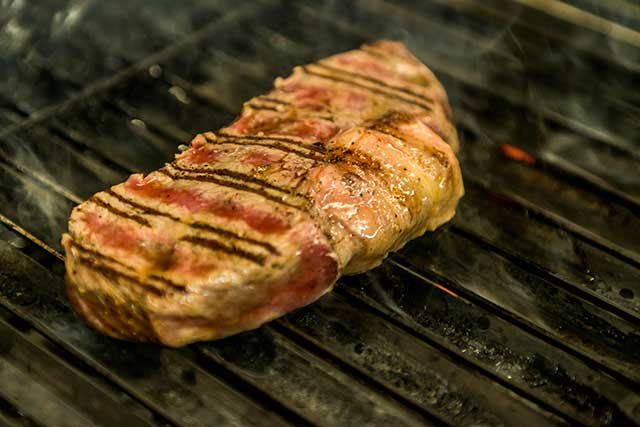
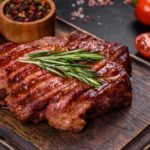
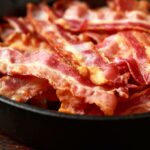




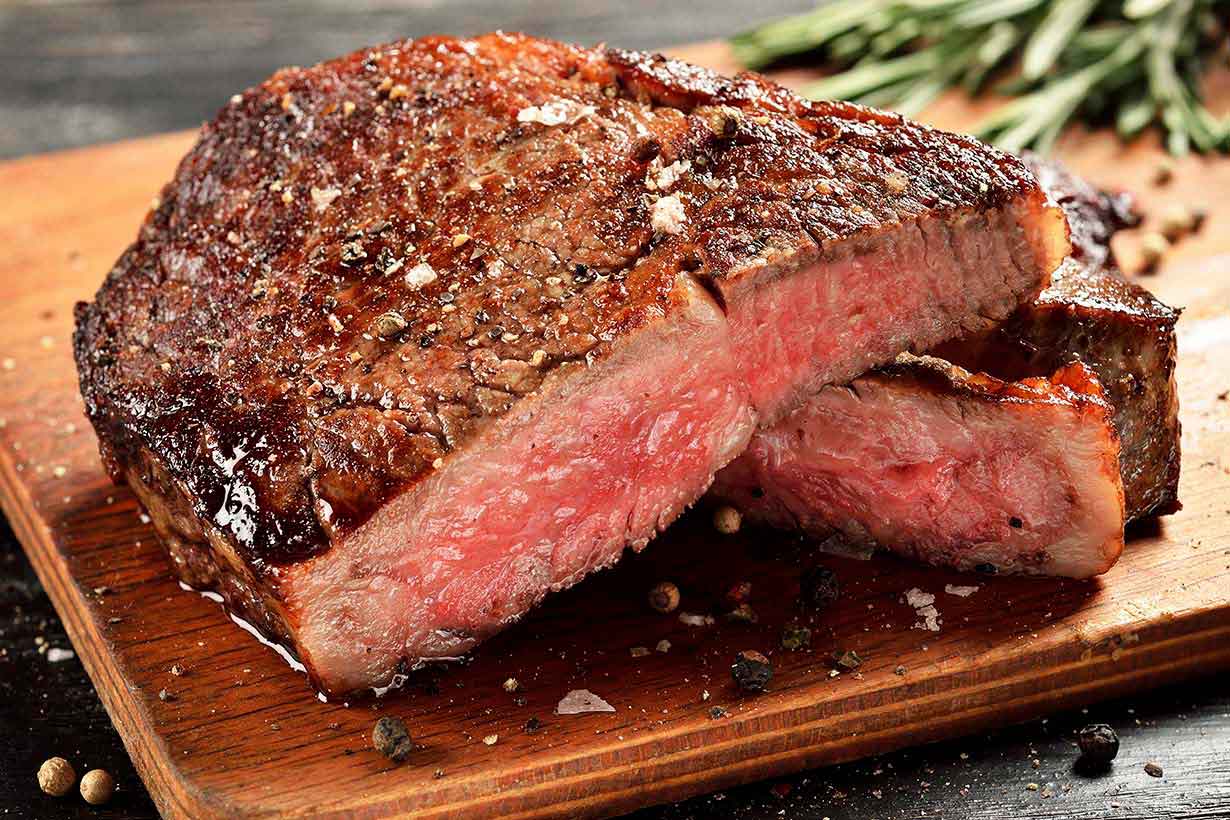
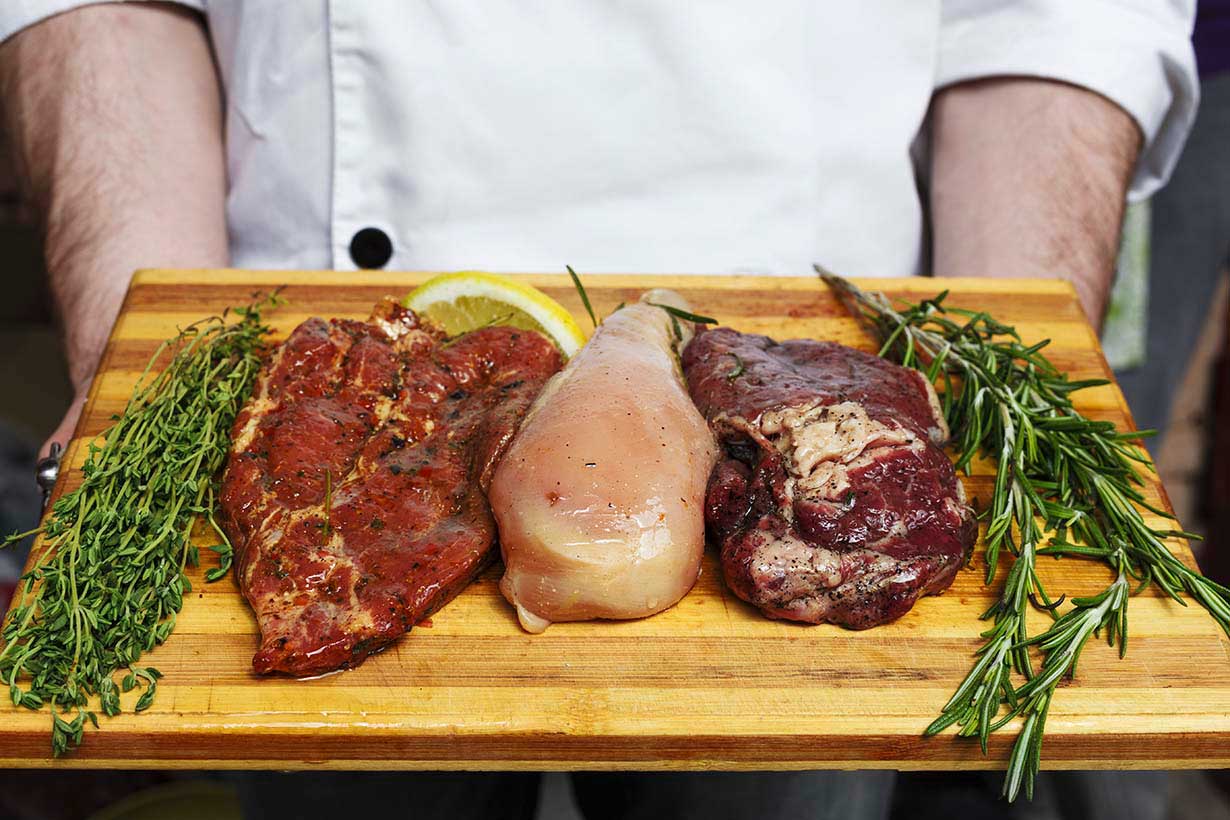
well done!
Thanks Eric!
Is this information for cooked or raw steak?
The information is for cooked steak – you can find the references for the nutritional values in the (number) in parentheses.